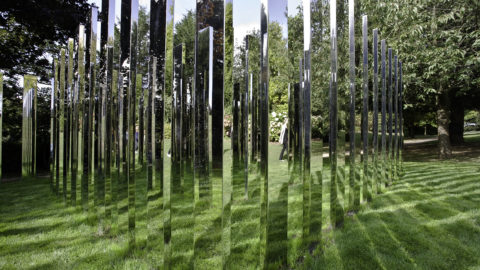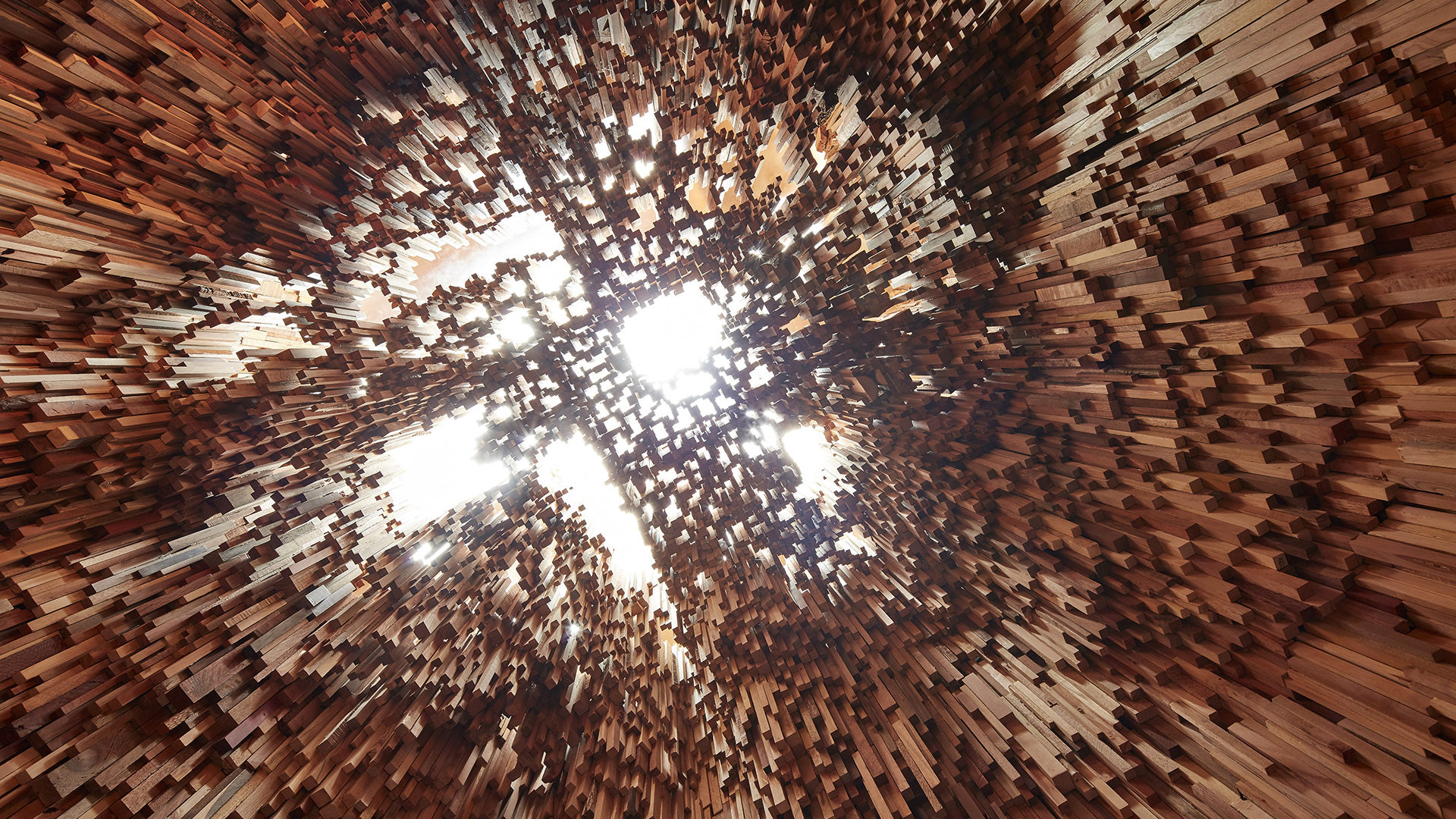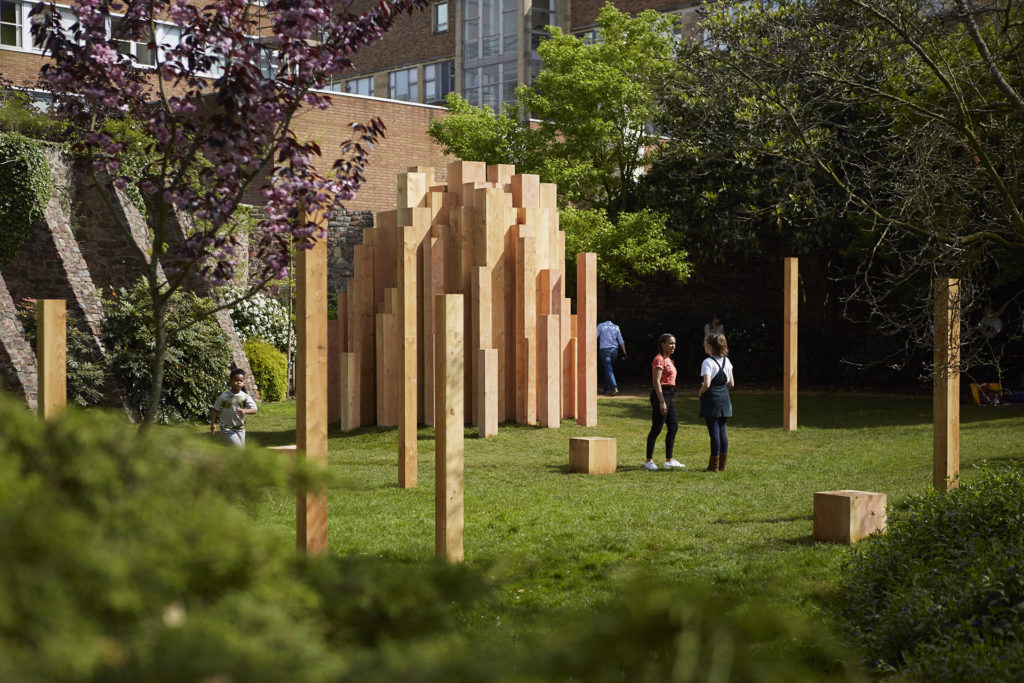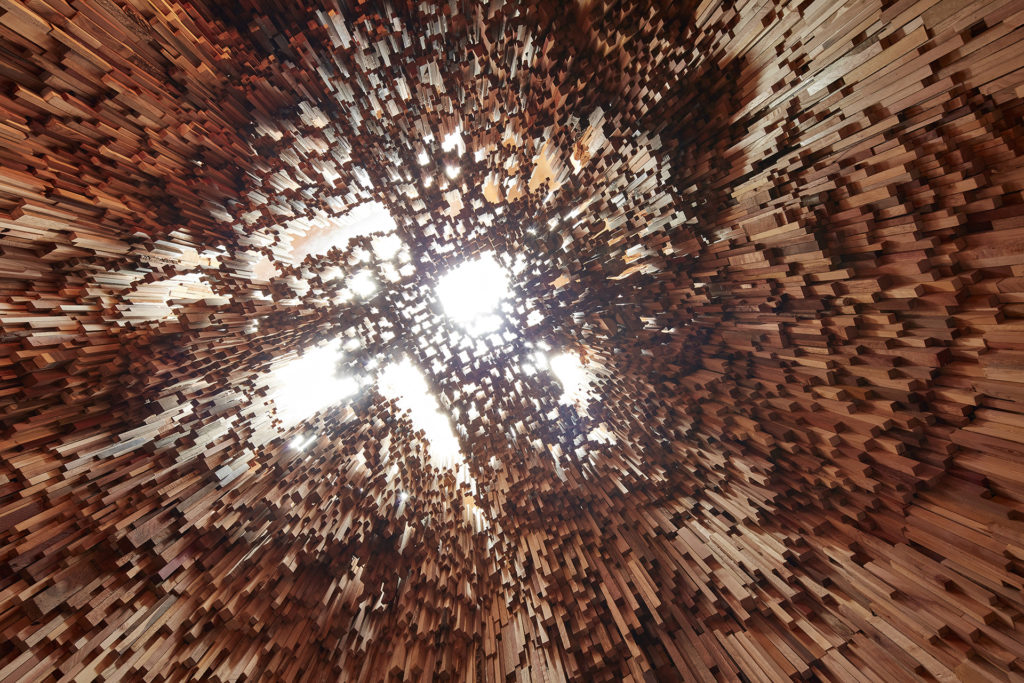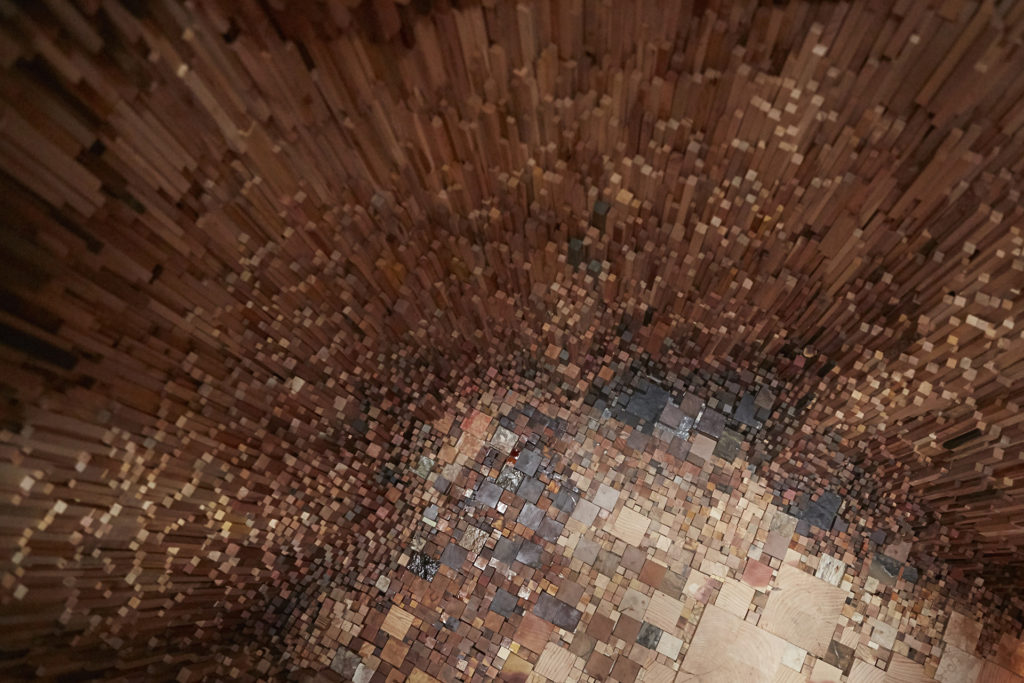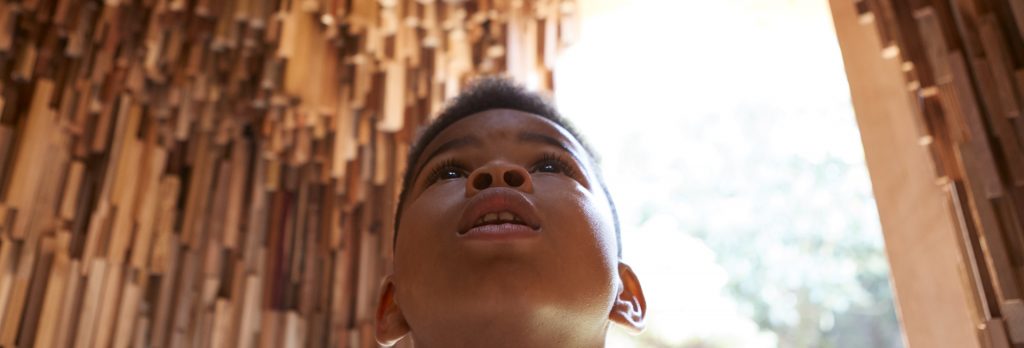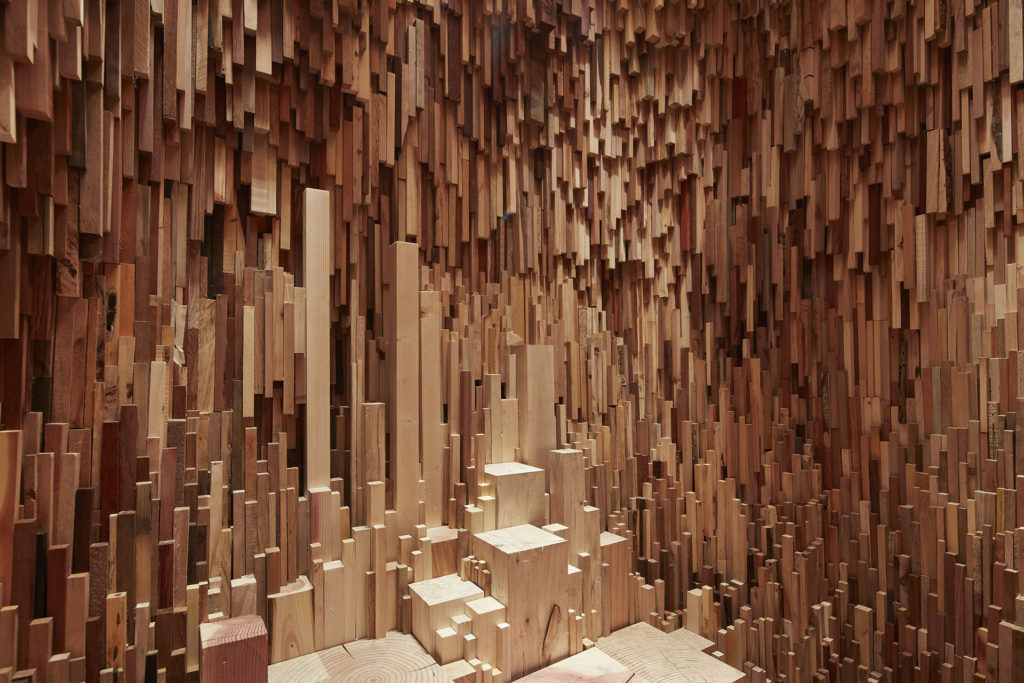Katie Paterson in collaboration with Zeller & Moye gathered 10,000 tree species spanning time and space creating a new public artwork Hollow, which was was unveiled on 9 May 2016 at Royal Fort Gardens to mark the opening of the University of Bristol’s new Life Sciences building.
Step inside a structure that is made of thousands of unique samples of tree species, sourced from every country across the world, from fossilized trees from the earliest forests that emerged over 390 million years ago to the most recent emergent species. Within Hollow you will discover the story of the planet.
Renowned for her exploration of the cosmos and geological time, artist Katie Paterson has amassed a collection of 10,000 tree species to form a new artwork for Bristol. The samples of wood span time and space and have been sourced from across the globe. From the oldest tree in the world to some of the youngest and near-extinct species, the tree samples contain within them stories of the planet’s history and evolution through time.
Hollow In Conversation
On 9 May 2016, we joined artist Katie Paterson and architects Zeller & Moye to hear how the University of Bristol’s newest public artwork – Hollow – was created.
Joined by evolutionary biologist Dr Jon Bridle, from the University of Bristol’s School of Biological Sciences, and chaired by Dr Edson Burton, they discussed how they worked together to gather 10,000 unique tree species from every country on the planet to build this unique artwork – a forest of all the world’s trees in microcosm, spanning millions of years.
As part of the launch of Hollow, Situations also worked with BBC Get Creative to produce Treebank, a digital repository of personal memories of trees. The project is no longer online, but you can explore the fly-through here.
About the artist
“Katie Paterson operates like an Enlightenment Polymath, drawing on both scientific expertise and Romantic wonderment to create art that crosses mediums and disciplines. Rather than rejecting categories, she includes them all.” – Zoe Pilger, The Independent
Katie Paterson (b. 1981, Scotland) creates beautiful conceptual artworks. In the past, she has broadcast the sounds of a melting glacier live to a visitor on a mobile phone in an art gallery, mapped all the dead stars by compiling a slide archive of the history of darkness across the ages, custom-made a light bulb to simulate the experience of moonlight, and buried a nano-sized grain of sand deep within the Sahara desert.
Katie Paterson was winner of the Independent’s Creative 30 award ‘for Britain’s most creative young person’ and has won a 2014 South Bank Sky Arts Award. In 2013, she was awarded an Honorary Fellowship at Edinburgh University in recognition of her ‘major contribution in fostering collaboration between the arts and sciences’.
Katie Paterson’s Hollow is produced by Situations and commissioned by University of Bristol.
About the architects
Christoph Zeller and Ingrid Moye founded Zeller & Moye as an architectural studio that operates with an interdisciplinary and global approach, with bases in Mexico City and Berlin. The studio established a unique working method of extensive experimentation for the development of a project in order to articulate meaningful proposals for the contemporary world.
Zeller & Moye has designed a wide range of projects at all scales from furniture design to large cultural buildings in different parts of the world. Christoph Zeller and Ingrid Moye have been practicing architecture for more than 14 years including work for international practices SANAA in Tokyo and Herzog & de Meuron in Basel and London, leading numerous projects such as the ‘Tate Modern Project’ and the ‘Serpentine Gallery Pavilion 2012’. Zeller & Moye are currently realising a memorial in Kurdistan, Iraq; a low-energy housing project in China; a design museum, two contemporary art galleries and a series of residential projects in Mexico; amongst others. Christoph Zeller and Ingrid Moye teach at the AA Visiting Schools Berlin and Mexico, a master class in urban studies at the UIA Mexico City and have been jury members, lecturers and guest critics at various universities.
Location and Accessibility
Royal Fort Gardens, Tyndall Avenue, BS8 1TH UK
Hollow is free to visit and open to all. Hollow is located to the right of the Tankard’s Close entrance to the gardens. The gardens can also be accessed via the entrance on Tyndall Avenue, just follow the path to the other side of the gardens. There is level access into Royal Fort Gardens and the area around Hollow. The entrance to Hollow is narrow with a low step inside. The floor, which comprises fossil fragments, is uneven. The interior is naturally lit and therefore may be dim on cloudy days or at dusk. We would advise only one or two people at a time enter Hollow to fully experience the work. Please tread carefully.
Resources

Hollow – a guide
A guide to Katie Paterson’s Hollow at Royal Fort Gardens
View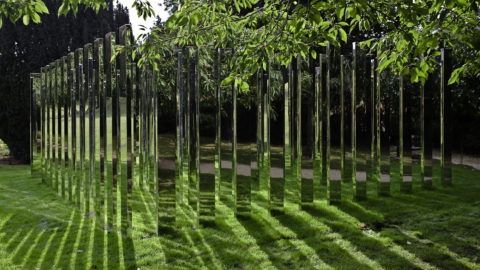
University of Bristol public art strategy
Situations produced the public art strategy for the University of…
ViewFurther Information
Links
Credits
Commissioned by the University of Bristol and produced by Situations. Funded by University of Bristol and Arts Council England. For full credits, please see hollow.org.uk.
Supported by
Related Projects
